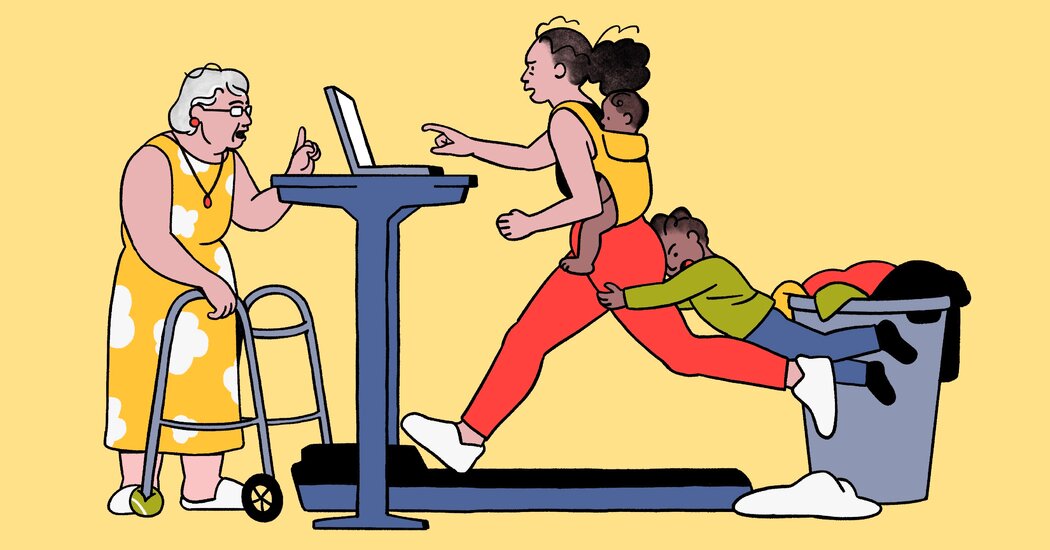Women have less time to work out than men. And their health pays the price.
After a full Saturday shuttling her two kids to soccer and play-dates across Manhattan, Neha Ruch, 39, finally carved out a few precious minutes to exercise at 6:15 p.m. She didn’t even bother to change clothes before hopping onto her elliptical machine in a closet-turned-home-gym.
After 15 minutes, the interruptions started. First, her husband poked his head in — their daughter was pleading for her to say good night. No problem, Ms. Ruch thought. She sat with her daughter for a while and then came back to the machine.
But just as she was breaking a sweat, her son wandered over, asking for help finding something to do. She sighed and turned off the machine.
“I had left the door wide open,” she said. After helping him, she surrendered to the couch.
It’s a story that’s played out in millions of homes, as women feel pulled between taking care of themselves and taking care of family. In one recent study of 400,000 Americans, only 33 percent of women met weekly recommendations for aerobic exercise, as opposed to 43 percent of men. Other studies, including a 2017 study of 147 countries, have confirmed this phenomenon across ages and demographics.
Experts say this exercise gender gap has a lot to do with the disproportionate amount of time and labor women devote to caring for the home and for others. It’s also consistent with research suggesting that, on the whole, women tend to prioritize other people’s health above their own, experts said.
“They make the time for themselves when there is no one else to be taken care of,” said Stephanie Roth-Goldberg, a clinical social worker and therapist in New York. Among her patients, the attitude is, “Where can I sneak this in?” she said.
